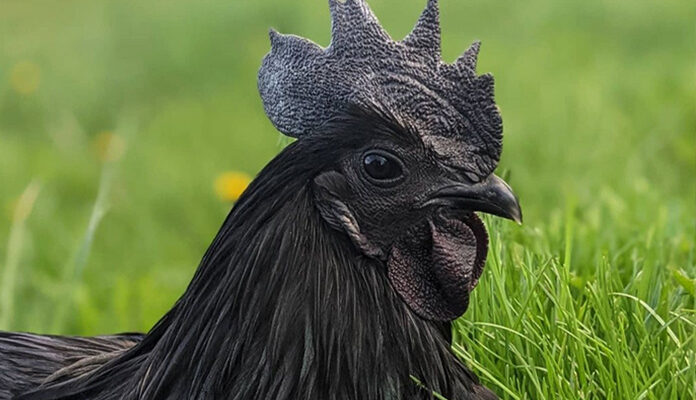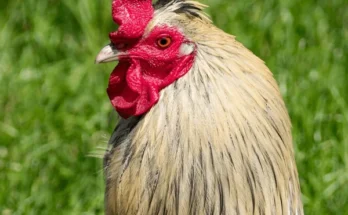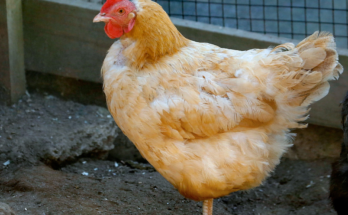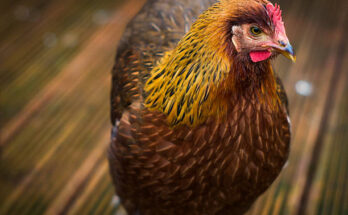Unveiling the Beauty and Diversity of Asian Chicken Breeds
Introducing a diverse and fascinating world of poultry, Asian chicken breeds stand out for their unique characteristics and significant contribution to the poultry industry. From the regal appearance of the Ayam Cemani to the elegant plumage of the Yokohama, these breeds offer a rich tapestry of traits that appeal to both seasoned breeders and backyard enthusiasts.
In this comprehensive guide, we will delve into the distinct attributes of various Asian chicken breeds, shedding light on their historical significance, notable physical features, and temperament. Whether you’re a poultry aficionado seeking to expand your flock or simply intrigued by the cultural importance of these breeds, this exploration will offer valuable insights and practical knowledge.
Join us as we embark on a captivating journey through the diverse landscapes of Asian chicken breeds, uncovering the allure and significance of these remarkable avian companions.
History of Asian Chicken Breeds
As we delve into the captivating history of Asian chicken breeds, it becomes evident that these breeds have left an indelible mark on traditional Asian cultures and have played a pivotal role in shaping the diverse spectrum of chicken breeds that exist today. Let’s explore the ancient origins and the cultural significance of these remarkable avian companions.
Ancient Origins
The story of Asian chicken breeds traces back to ancient times when these birds were revered for their multifaceted contributions to traditional Asian societies. From the majestic forests of Southeast Asia to the ancient farms of China and Japan, these breeds were initially domesticated for various purposes, including their prized eggs, flavorful meat, and even their ornamental beauty. Their unique genetic traits and adaptability to different environments contributed to the rich tapestry of chicken breeds we have today, showcasing a legacy of resilience and utility that has stood the test of time.
Cultural Significance
The cultural significance of Asian chicken breeds transcends mere utility and ventures into the realms of art, folklore, and culinary traditions. In various Asian societies, these breeds are not just livestock; they are revered symbols of prosperity, good fortune, and unity. Their presence can be witnessed in intricate artworks, vibrant festivals, and cherished culinary delicacies, where their flavors are celebrated with reverence. The tales of these breeds have been woven into the folklore and mythology of countless generations, portraying them as symbols of resilience and fortitude in the face of adversity.
3 Popular Asian Chicken Breeds
Asian chicken breeds are renowned for their unique characteristics and significant contributions to the poultry industry. Let’s delve into three popular Asian chicken breeds and explore their distinctive traits.
Silkie
Silkie chickens are known for their unmistakable appearance, featuring fluffy plumage and distinctive black skin. Their gentle demeanor makes them a favorite among poultry enthusiasts, and they are often kept for ornamental and exhibition purposes. In addition to their striking appearance, Silkie chickens are known for their broodiness, making them exceptional mothers when hatching eggs.
Brahma
Brahma chickens are revered for their large size and remarkable adaptability to various climates. They are a dual-purpose breed, excelling in both meat production and egg-laying capabilities. With their gentle nature and striking appearance, Brahma chickens make a wonderful addition to backyard flocks and are known for their docile temperament.
Ayam Cemani
Ayam Cemani chickens are celebrated for their unique all-black appearance, from their feathers to their internal organs. This breed holds cultural significance in Indonesia and is gaining popularity in the Western world due to its striking aesthetic. Despite their smaller size, Ayam Cemani chickens are known for their resilient nature and captivating presence. These are one of our personal favourites! and we included them in the far less common breeds of chicken guide you can find here.
These Asian chicken breeds have made a significant impact on the poultry industry, captivating enthusiasts with their distinct traits and cultural significance.
Characteristics of Asian Chicken Breeds
When it comes to Asian chicken breeds, their characteristics set them apart from other types in various ways. From distinctive physical features to their temperament, and egg production capabilities, these breeds have unique traits that make them stand out in the world of poultry farming.
Distinctive Physical Features
Asian chicken breeds are known for their unique physical characteristics, including prominent feather colors, comb types, and size variations. For instance, chickens such as the Ayam Cemani are recognized for their striking black feathers and skin, while the Silkie breed is famous for its fluffy plumage and distinct blue earlobes. Additionally, many Asian chicken breeds exhibit smaller body sizes and diverse comb formations, adding to their visual appeal and distinctiveness.
Temperament and Behavior
Asian chicken breeds are prized for their adaptable temperament and behavior patterns that make them suitable for various climates and farming practices. These breeds often exhibit resilience in adapting to different weather conditions and are known to thrive in both hot and cold environments. Their calm and friendly nature also makes them ideal for backyard farming, as they are often docile and easy to handle. These traits contribute to their popularity among farmers and poultry enthusiasts alike.
Egg Production and Quality
Asian chicken breeds are valued not only for their physical attributes but also for their egg-laying capabilities. These breeds typically lay eggs of varying sizes and colors, with some producing notably larger or more frequent eggs than popular European egg-laying breeds. For instance, breeds like the Japanese Bantam are known for their smaller-sized eggs, while others such as the Cochin are recognized for their consistent and reliable egg production. The quality of eggs produced by Asian chicken breeds often rivals that of their European counterparts, making them a desirable choice for farmers and consumers alike. Here you can find a guide on the most common egg laying chickens that are used in the west.
 Photo by Magda Ehlers
Photo by Magda Ehlers
Future Outlook and Importance
Asian chicken breeds play a crucial role in the future of poultry farming, particularly with regards to sustainable agriculture, genetic resilience, and food security in the face of a rapidly changing world. Let’s explore their significance in more detail.
Sustainable Agriculture
In the context of sustainable agriculture, Asian chicken breeds offer substantial benefits. Their ability to thrive in free-range systems makes them valuable assets in diversified agricultural landscapes. Unlike industrialized breeds, these chickens possess traits that allow them to forage effectively, contributing to natural pest control and soil fertilization. The economic impact of these chickens in rural Asian locations is significant, providing livelihood opportunities and bolstering local economies.
 Photo by cottonbro studio
Photo by cottonbro studio
Biodiversity and Genetic Resilience
Preserving genetic diversity within Asian chicken breeds is paramount for the future of poultry farming. These breeds hold a wealth of genetic traits that are essential for the resilience of poultry farming in the face of evolving challenges such as diseases and climate change. By safeguarding these genetic resources, the poultry industry can continue to develop breeds with heightened resistance to various environmental stressors, ensuring a sustainable and adaptable poultry farming sector.
Conclusion
When considering the historical significance, unique traits, conservation efforts, and future importance of Asian chicken breeds in the global poultry industry, it becomes evident that these breeds have played a crucial role in shaping the poultry landscape. With a rich history dating back centuries, these breeds hold cultural and historical significance, contributing to the diversity and resilience of poultry populations worldwide. The unique traits and characteristics of Asian chicken breeds offer valuable genetic resources, promoting biodiversity and contributing to the adaptability of poultry in various environmental conditions.
Moreover, dedicated conservation efforts are essential to safeguarding these valuable breeds, ensuring their survival for future generations. The collaborative initiatives undertaken by organizations and enthusiasts aim to preserve the genetic diversity and heritage of Asian chicken breeds, recognizing their significance in sustaining the global poultry industry. Emphasizing the cultural, economic, and environmental importance of these breeds, conservation endeavors are pivotal in securing their continued existence and promoting awareness of their value.
Looking ahead, the future importance of Asian chicken breeds in the global poultry industry remains significant. Their genetic resilience, adaptability, and unique traits position them as valuable assets for addressing emerging challenges in poultry farming, such as disease resistance and environmental adaptation. As the industry continues to evolve, the incorporation of genetic diversity from Asian chicken breeds holds promise for enhancing the sustainability and productivity of poultry operations worldwide.



